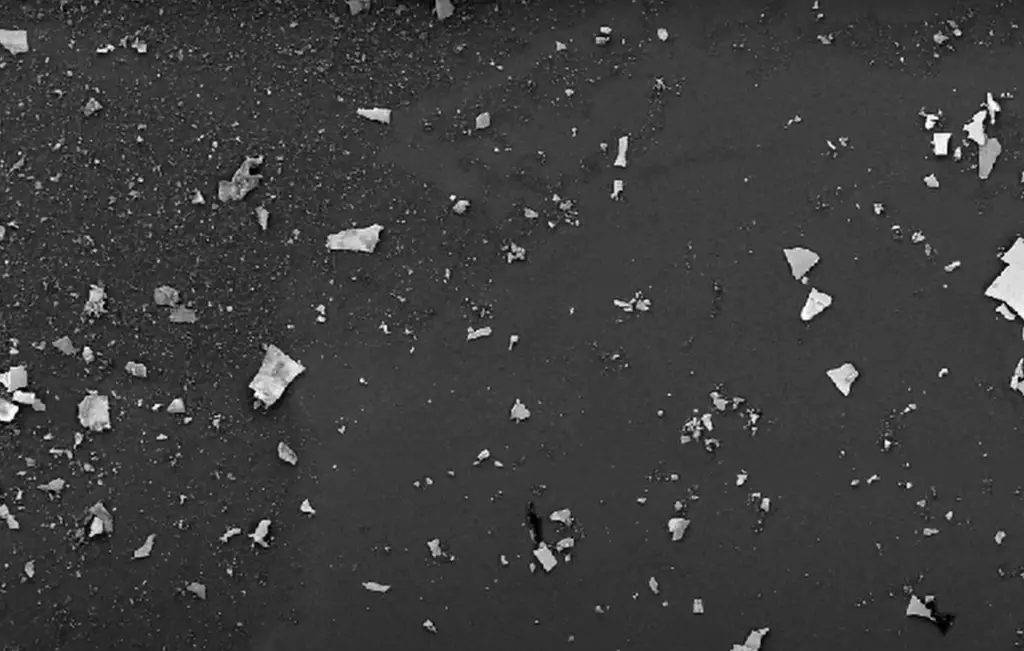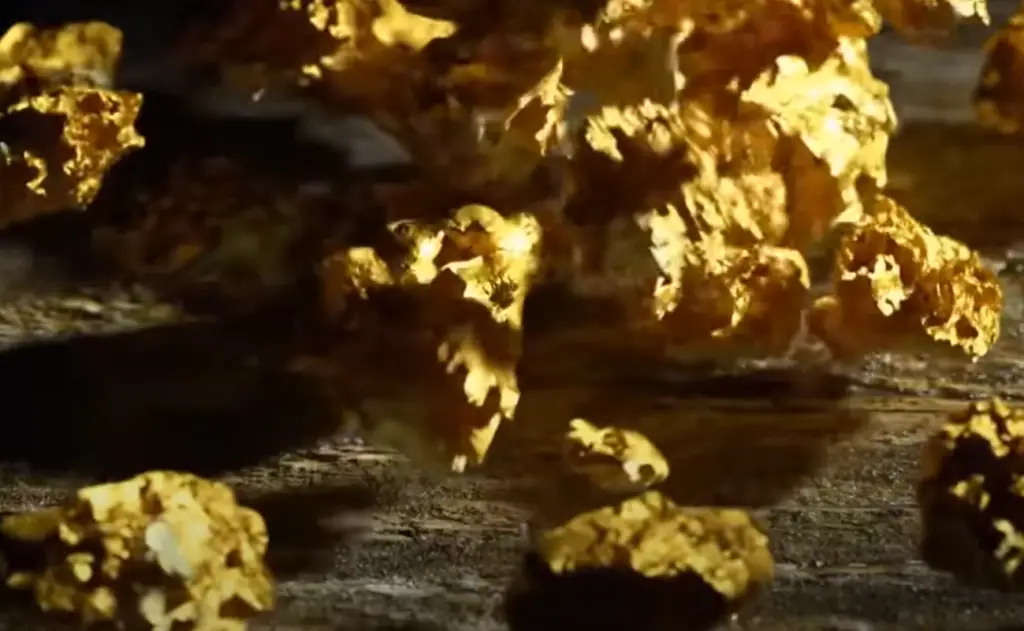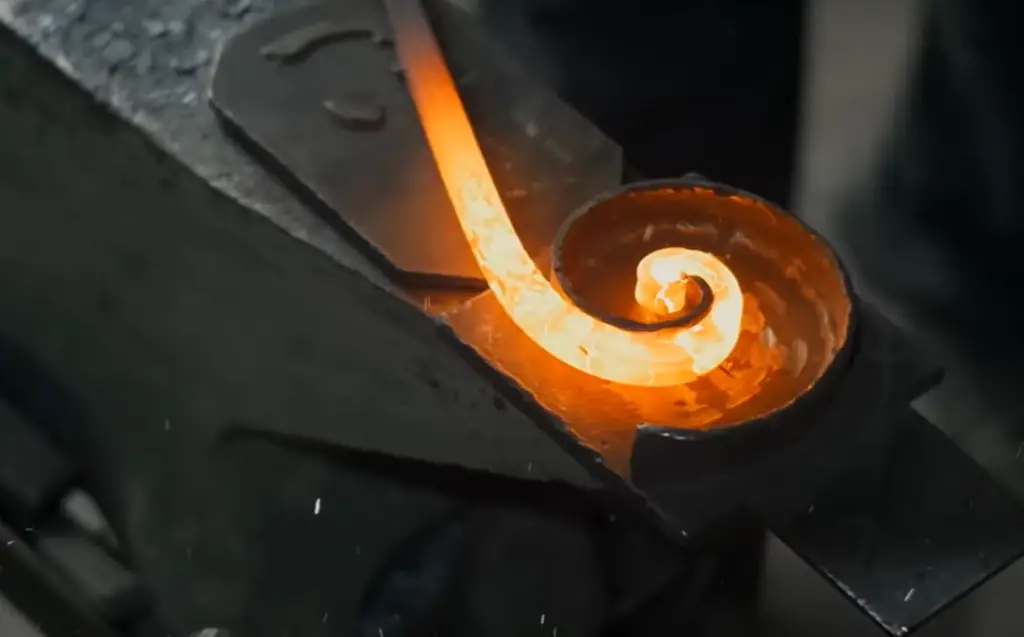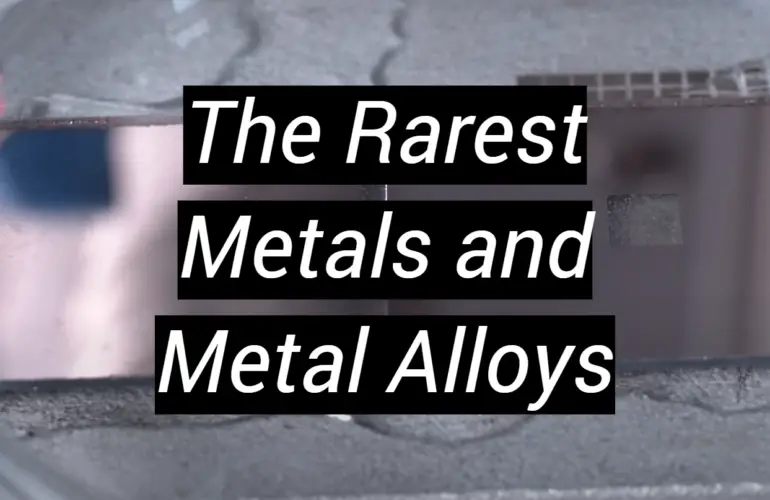Metals and alloys play a vital and indispensable role in our daily lives, serving as the backbone of countless industries and technologies. From construction and transportation to electronics and healthcare, their versatile properties and exceptional strength have revolutionized our world.
However, beyond the commonly known metals, there exists a captivating realm of rare metals and alloys. These extraordinary materials possess exceptional characteristics that make them truly exceptional. From the superconductivity of niobium-tin compounds to the heat resistance of tungsten alloys, their unique properties and applications are as fascinating as their scarcity.
Exploring this fascinating world of rare metals and alloys unveils a realm of endless possibilities, fueling innovation and pushing the boundaries of what is possible. These remarkable materials hold the potential to shape the future and inspire breakthroughs in various fields. The quest to harness their extraordinary qualities continues to drive scientific research and technological advancements, opening new doors of discovery and innovation.
The Seven Rarest Metals
Gold
Gold, often symbolizing wealth and power, is indeed a rare and precious metal. Its allure stretches back through the annals of history, captivating civilizations with its shimmering beauty and intrinsic value. Although its use in jewelry is well-known, gold’s applications extend far beyond adornment. Its remarkable properties make it a versatile material in various industries.
Due to its high malleability and ductility, Gold can be fashioned into incredibly thin wires and sheets, enabling intricate designs in electronics and delicate craftsmanship in artistry. Moreover, Gold’s excellent conductivity plays a vital role in the field of electronics, facilitating the smooth flow of electrical currents in devices ranging from smartphones to spacecraft.

Beyond its aesthetic and functional attributes, Gold’s resistance to tarnish and corrosion has led to its utilization in high-quality coatings for a wide array of objects. From the gilded accents on ancient artifacts to the protective layers on modern spacecraft, gold’s durability and longevity bring a touch of elegance and durability to diverse applications.
Throughout the ages, Gold has held its intrinsic value and demand, standing the test of time as a steadfast store of wealth. From shimmering ancient coins to the intricate circuitry of today’s technology, gold continues to captivate and inspire, showcasing its rare beauty and enduring significance.
Osmium
Osmium, a truly captivating member of the Platinum group, is not only known for being the densest naturally occurring element, but also for its fascinating qualities. This bluish-white element exhibits remarkable hardness, especially when alloyed with other elements in its group. Its incredible durability makes it highly suitable for high-wear applications, such as creating fountain pen tips, record player needles, and electrical contacts. Additionally, Osmium plays a significant role in the creation of certain durable alloys, further highlighting its versatility. Despite its impressive properties, Osmium’s use is limited due to its rarity and the production of toxic compounds when oxidized. Although it may not be as widely recognized as some of its counterparts, Osmium’s unique attributes underscore the diversity and significance of the world’s rarest metals in remarkable ways.
Iridium
Iridium, an intriguing member of the Platinum group, is renowned for its remarkable density and exceptional corrosion resistance. With its high melting and boiling points, this dense, silvery-white metal finds its perfect application in specialized industries that require materials capable of withstanding extreme conditions, such as certain components in rocket engines. Moreover, beyond its robustness, Iridium also plays a vital role in the electronics industry due to its outstanding electrical conductivity. Given its rarity and unique characteristics, iridium stands not only as one of the rarest elements but also as one of the most highly valued substances on our planet, adding to its allure and significance in various scientific and technological fields.
Palladium
Palladium, a lustrous silvery-white metal, is a crucial member of the Platinum group known for its remarkable properties. One of its most notable features is its exceptional ability to catalyze chemical reactions, making it highly sought after in various industries. In the automotive sector, Palladium finds widespread use in catalytic converters to minimize harmful emissions, contributing to cleaner air. Its versatility extends beyond automotive applications, as it is also utilized in electronics, dentistry, and medicine. This is primarily due to its outstanding corrosion resistance and high electrical conductivity, making it an ideal choice for these fields. In the realm of jewelry, Palladium serves as a precious metal in white gold alloys, often serving as a more affordable alternative to platinum due to its lower density and price. Despite its extensive usage, Palladium remains a rare metal, underscoring the significant role that these scarce materials play in our everyday lives and the importance of responsible sourcing and recycling practices.
Ruthenium and Rhodium
Now let’s turn our attention to Ruthenium, another fascinating member of the Platinum group metals. This shiny, silver-white metal not only boasts excellent electrical conductivity but also possesses remarkable durability due to its relatively hard nature. Ruthenium finds its prominent application in electronic devices, specifically in chip resistors and electrical contacts. However, its significance doesn’t stop there. This remarkable metal plays a crucial role in the manufacturing of certain alloys, where it is added to enhance their corrosion resistance and overall strength. Despite its rarity, Ruthenium’s presence brings substantial value to the industries where it is employed, once again demonstrating how these rare metals contribute to our technological progress.

On the other hand, let’s explore the captivating properties of Rhodium, a silvery-white metal that is widely regarded as one of the most rare and precious metals found on Earth. Renowned for its incredible resistance to corrosion, Rhodium remains untarnished and unoxidized even under standard atmospheric conditions. Its primary application lies in catalytic converters, where it plays a vital role in reducing harmful vehicle emissions. Additionally, within the jewelry industry, Rhodium serves as a popular plating choice to enhance the shine and durability of white Gold and Silver jewelry. Despite its rarity and accompanying high price, the exceptional properties of Rhodium continue to make it a highly desirable and indispensable metal across various industries.
By delving deeper into the intricacies of both Ruthenium and Rhodium, we gain a greater understanding of the significant contributions these metals make, not only in terms of their unique properties but also in fostering advancements in technology and industry.
Tellurium
Shifting our focus to Tellurium, a fascinating metalloid that is not only rare but also highly valuable. This silvery-white element, found in far lesser abundance than gold, stands as one of the rarest stable solid elements known on Earth. What sets Tellurium apart is its remarkable semiconductor properties, making it an indispensable component in the electronics industry. Moreover, Tellurium plays a crucial role in enhancing the machinability of other metals when alloyed with them. Notably, it finds application in the production of specific types of solar panels, thanks to its exceptional photoconductivity properties.
Despite its scarcity, the unique properties of Tellurium position it as an indispensable player in driving sustainable energy solutions and fueling electronic innovations.Rhenium
Rhenium, a silvery-white metal with a high melting point of approximately 3,180 degrees Celsius, is not only rare but also one of the most precious materials found on our planet. Its scarcity adds to its allure, making it highly sought after in various industries.
This exceptional metal finds extensive use in high-temperature turbine engines, where its heat-resistant properties are crucial for optimal performance. Additionally, Rhenium serves as a catalyst in the refining process of crude oil, aiding in the production of gasoline. Its unique ability to withstand extreme temperatures makes it an indispensable component in rocket engines for aerospace applications.
But Rhenium’s influence extends beyond large-scale industries. Even on a smaller scale, this rare metal finds utility in the production of thermocouples, devices used to measure temperature accurately. The versatility and exceptional properties of Rhenium make it an essential material in a wide range of key industries.
Thus, the profound importance of rare metals like Rhenium cannot be understated in our modern world. Their scarcity and unique attributes contribute significantly to advancements in technology and further solidify their significance in shaping various aspects of our lives.[1]
The Rarest Metal Alloys
Aluminum-Scandium
Aluminum-Scandium, or AlSc, is an exceptionally rare and highly valuable alloy that deserves our attention. Scandium, a captivating silver-white metal, stands as one of the rarest elements found on Earth, rendering any alloy that incorporates it truly remarkable. When this extraordinary metal is combined with Aluminum, the resulting alloy gains an array of exceptional properties. It becomes not only incredibly strong and light but also remarkably resistant to corrosion, making it an ideal material for a wide range of industries.

One of the most notable applications of Aluminum-Scandium alloys lies in the aerospace industry. Due to its outstanding performance at extreme temperatures and its lightweight nature, this alloy finds its place in spacecraft and jet fighters alike. It plays an essential role in pushing the boundaries of what is possible in the field of aerospace engineering, allowing us to explore the uncharted territories of the sky with confidence and precision.
Despite the scarcity and high cost of Scandium, its impressive characteristics make it indispensable in critical applications where performance simply cannot be compromised. Its inclusion in Aluminum-Scandium alloys showcases the unwavering commitment to excellence and innovation, propelling us towards a future where the limits of technology and engineering are continuously surpassed.
Silver-Lutetium
Our exploration of rare alloys would be incomplete without mentioning Silver-Lutetium. This exceptional alloy is the result of combining Silver, a highly conductive and reflective metal, with Lutetium, one of the rarest lanthanides found on Earth. Lutetium, though not commonly occurring in nature, when combined with Silver, creates an alloy with distinctive properties that set it apart. Notably, the Silver-Lutetium alloy exhibits remarkable thermal and electrical conductivity, as well as a robust resistance to corrosion. These exceptional attributes make Silver-Lutetium highly sought after for a myriad of high-tech applications, particularly in the fields of electronics and aerospace. Despite the scarcity and subsequent high price of Lutetium, the unique and invaluable attributes of the Silver-Lutetium alloy firmly establish its position as an indispensable asset in the realm of advanced materials.
Iron-Gadolinium
Last certainly not least, it is worth mentioning Iron-Gadolinium, an incredibly unique and valuable alloy that deserves our attention. Gadolinium, a rare Earth metal known for its exceptional magnetic properties, exhibits remarkable versatility when combined with Iron.
One of the notable applications of Iron-Gadolinium lies in the realm of data storage devices and magnetic refrigeration technology. This alloy’s considerable magneto-caloric effect allows for efficient cooling and heating based on magnetic fields, making it an indispensable component in these cutting-edge technologies. While Gadolinium remains relatively rare and expensive, the remarkable characteristics of this alloy contribute significantly to the continuous technological advancements that shape our world.[2]
Alloy Analysis
Analyzing these rare and fascinating metal alloys reveals a captivating pattern: the perfect intersection of scarcity and utility. Each of these alloys, despite their remarkable rarity, endorses unique and extraordinary characteristics that render them utterly indispensable across a wide range of industries.

From the cutting-edge realms of technology and aerospace to the critical domains of healthcare and jewelry, these alloys possess distinct physical, chemical, and electromagnetic properties that have played a pivotal role in shaping and advancing modern society. Despite their elevated cost and limited availability, their inclusion and integration within various applications stand as a resounding testament to human ingenuity and our relentless pursuit of pushing the boundaries and harnessing the full potential of these precious resources. Exploring the depths of these alloys goes beyond understanding their elemental compositions and combinations; it embodies a broader narrative of human progress and our unwavering quest to master nature’s raw materials for our ultimate benefit and advancement.
FAQ
What is the rarest alloy?
The title of the rarest alloy arguably belongs to the unique combination of Osmium and Iridium. These two elements, known for their scarcity on earth, come together to form an alloy of unparalleled rarity. This alloy possesses extraordinary hardness, making it ideal for applications that demand extreme durability.
Primarily used in high-wear scenarios, such as the tips of fountain pens and the needles of compasses, the Osmium-Iridium alloy showcases its exceptional properties. Its remarkable hardness ensures longevity and precision, even in the harshest conditions. Despite its rarity and associated cost, this prized material continues to be valued in areas where durability and precision are of utmost importance.
What is the rarest metal on Earth?
The title of the rarest metal on Earth arguably goes to Rhodium. This precious metal, with its atomic number 45 on the periodic table, is not only extremely scarce but also boasts fascinating properties that make it highly coveted. Due to its rarity and high cost, Rhodium is used in small amounts, making it an exclusive material in various industries.
One of the primary applications of Rhodium is in catalytic converters, playing a crucial role in reducing harmful emissions from automobiles. Its exceptional ability to facilitate chemical reactions and convert toxic gases into less harmful substances makes it an invaluable component in the fight against air pollution.

Beyond its environmental contributions, Rhodium also finds its place in the world of luxury jewelry. Its reflective properties and remarkable resistance to tarnish make it an ideal choice for creating stunning, long-lasting pieces. From elegant necklaces to dazzling rings, Rhodium adds a touch of brilliance and sophistication to the world of fine jewelry.
Despite its rarity and cost, Rhodium’s unique properties and versatile applications continue to make it a highly sought-after material. By contributing to our ongoing efforts towards environmental sustainability and adding luster to the world of luxury jewelry, Rhodium truly shines as a remarkable metal that exemplifies both beauty and utility.
What is the most expensive alloy metal?
Among the numerous alloy metals, Rhodium is recognized as the most expensive. This precious metal is incredibly rare, contributing to its high value. Extracted as a byproduct of Platinum and Nickel mining, its scarcity, coupled with its specific applications, drives its price. The primary use of Rhodium is in the automotive industry, where it serves as a crucial component in catalytic converters, helping reduce harmful vehicle emissions. Additionally, its dazzling, highly reflective surface and resistance to tarnishing make Rhodium a sought-after material in the jewelry industry, often used for plating white Gold and Silver to enhance their shine. Despite its cost, the unique properties of Rhodium make it an essential asset in various industries, underscoring the intricate balance between scarcity, value, and utility in the world of rare metals.
Is Titanium rare?
While Titanium is not considered one of the rarest metals on Earth, it is still deemed a valuable resource due to its unique characteristics. Titanium is recognized for its strength, lightweight, and exceptional resistance to corrosion, making it extensively utilized in industries such as aerospace, medical, automotive, and even sports equipment manufacturing. Despite its relative abundance compared to elements like Rhodium or Osmium, the process of extracting Titanium from its ores is complex and costly, which contributes to its value. So, while not rare in the traditional sense, its extraction difficulty and the unique properties it possesses place Titanium in a category of importance in the realm of metals and alloys.
What is rarer than Rhodium?
Even rarer than Rhodium is the elusive element Astatine. This halogen, with atomic number 85, is considered the rarest naturally occurring element on Earth that can be directly obtained from the Earth’s crust. Astatine’s scarcity is due to its extremely short half-life and the difficulties in its production and isolation. It is primarily produced synthetically through the bombardment of bismuth with Alpha particles, a process that requires sophisticated equipment and expertise.
The scarcity of Astatine is so pronounced that it’s estimated that at any given time, there is less than 1 ounce of it present in the Earth’s crust. It is a highly radioactive element, making it challenging to handle and study. Due to its scarcity and high radioactivity, Astatine has no significant industrial application. However, its potential use in targeted Alpha particle therapy in cancer treatment is being explored, making Astatine a fascinating element despite its rarity. Scientists are investigating its properties and behavior to unlock its full potential in the field of medicine.

The study of Astatine is a testament to human curiosity and our relentless pursuit of knowledge. As we uncover more about this scarce element, we gain a deeper understanding of the mysteries of the universe and the fundamental building blocks of matter.
What is the hardest alloy ever?
The title for the hardest alloy on Earth is arguably held by a mixture of the elements Chromium, Molybdenum, and Steel known as Chromoly. This extraordinary alloy, known for its incredible strength and durability, offers exceptional resistance to wear and tear, making it a top choice for high-stress components in the automotive and aerospace industries.
Its unique combination of strength and workability makes it a preferred material for engineers working on projects that demand toughness and resilience. The underlying strength of this remarkable alloy epitomizes mankind’s ability to engineer materials that push the boundaries of what is possible.Useful Video: Metal Alloys of the Future?
Conclusion
In conclusion, the world of rare metals and alloys is indeed intriguing, a fascinating testament to the marvels of nature and the boundless ingenuity of mankind. Each of these elements and alloys, despite their scarcity and elevated cost, play indispensable and multifaceted roles across various sectors, ranging from industrial applications to healthcare advancements and even the creation of luxurious goods.
Consider, for instance, the remarkable properties exhibited by these exceptional materials: Rhodium, renowned for its unparalleled reflectivity, adds a touch of brilliance to our lives. Titanium, celebrated for its exceptional strength-to-weight ratio, empowers engineers to push the boundaries of innovation. And the Osmium-Iridium alloy, known for its extraordinary hardness, enables the creation of tools that can withstand the harshest of conditions.
Our deep understanding and relentless utilization of these precious resources are a testament to human innovation and our ceaseless quest for progress. These extraordinary materials underscore the symbiotic relationship between mankind and the natural world, as we navigate the delicate balance of harnessing their power while preserving the Earth’s resources. While they may be the rarest and most expensive metals on Earth, there is no denying their indispensable role in shaping our modern lives and propelling us towards a future defined by advancement and discovery.
References:
- https://www.geologyforinvestors.com/7-rarest-metals-which-you-never-heard-of/
- https://markhammetals.com/the-rarest-metal-alloys/






